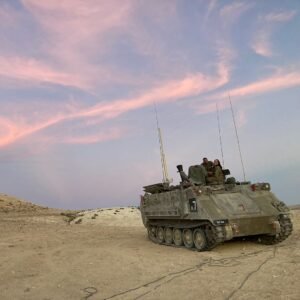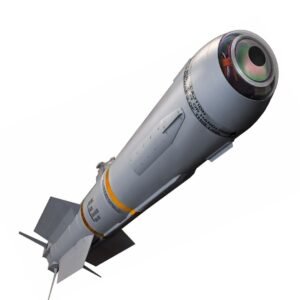I. The Evolution of the Iron Dome Air Defence System
Back in the 1990s, Hezbollah, a formidable force based in Lebanon, incited security concerns for the Israel Defense Forces (IDF) by launching rockets into northern Israeli towns. Israel mulled over the concept of establishing its own short-range antimissile system. However, apprehensions from U.S. defense officials about its viability loomed large, casting doubt on its potential success. Fast forward to 2004, the impetus for the Iron Dome air defence system gained momentum with the appointment of Brig. Gen. Daniel Gold as the head of the IDF’s research and development bureau. Gold fervently advocated for the antimissile initiative, skillfully maneuvering around army contracting regulations to secure the necessary funding. His persuasive abilities also played a pivotal role in garnering support from key political figures.
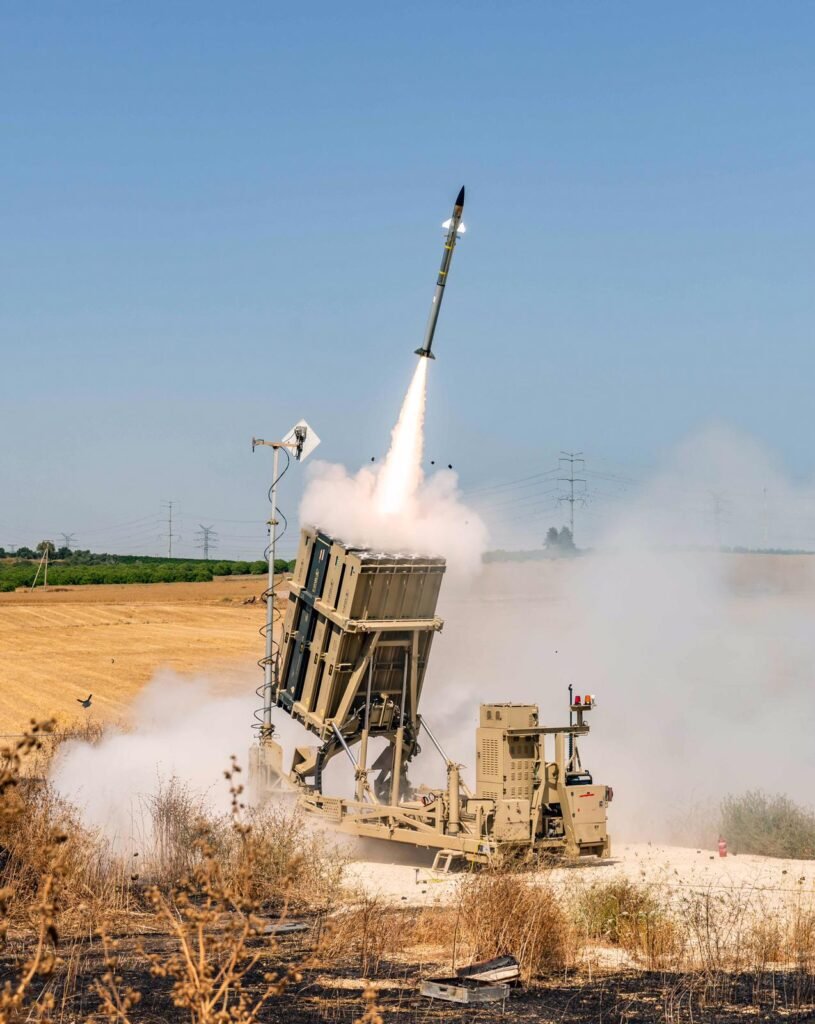
A. During The Second Lebanon War
The urgency for a robust defense became palpable during the 2006 Second Lebanon War, where an onslaught of nearly 4,000 Hezbollah-fired rockets, primarily short-range Katyushas, descended upon northern Israel, including Haifa, the nation’s third-largest city. The relentless rocket barrage claimed the lives of 44 Israeli civilians and forced approximately 250,000 citizens to seek refuge in other parts of the country. Notably, nearly a million Israelis found themselves confined within or near bomb shelters during the conflict.
B. Hamas Attacks on Israel (2000 & 2008)
To the south, the incessant firing of over 8,000 projectiles, including rockets and mortar bombs, between 2000 and 2008 by Hamas, created a perilous predicament for the more than a million Israelis residing in the range of these attacks. These Qassam rockets, propelled by 122 mm Grad launchers smuggled into the Gaza Strip, exhibited an alarming extended reach, heightening the security threat to Israel and its populace.
C. Israel Defence System Adopting Iron Dome Air Defence System
In February 2007, Defense Minister Amir Peretz sanctioned the adoption of the Iron Dome air defence system as Israel’s shield against these imminent short-range rocket threats. Since then, the collaboration between Rafael Advanced Defense Systems and the IDF has led to the development of the $210 million system, an innovative endeavor to fortify the nation’s security.
D. Group of Rocket & Bombs in Gaza Challenges for Iron Dome ADS
As of May 2021, it was estimated that Palestinian militant groups had amassed an arsenal of approximately 30,000 rockets and mortar bombs in Gaza, serving as potential targets for the Iron Dome air defence system. Although the range and payload of these rockets vary significantly, their increasing accuracy over the years continues to pose a formidable challenge.

II. Safeguarding Israeli Skies: The Iron Dome Air Defence System
The Iron Dome Air Defence System, a pioneering Israeli innovation, stands as a stalwart defense against short-range rockets and artillery shells targeting populated areas. Developed by Rafael Advanced Defense Systems and Israel Aerospace Industries, this mobile, all-weather system is engineered to intercept and neutralize threats launched within a range of 4 to 70 kilometers (2–43 mi) from the Israeli border.
A. From 2011 to 2021 Iron Dome Air Defence System Progress
the United States displayed a strong commitment to reinforcing Israel’s security, contributing a substantial $1.6 billion to the Iron Dome defense system. Recognizing its pivotal role, the US Congress approved an additional $1 billion in funding for the system in 2022, solidifying its position as a crucial shield for the nation.
The operational debut of the Iron Dome on March 27, 2011, near Beersheba marked a significant milestone in Israel’s defense capabilities. Just a few weeks later, on April 7, 2011, it demonstrated its efficacy by successfully intercepting a rocket launched from Gaza, showcasing its ability to safeguard Israeli territories from hostile threats.
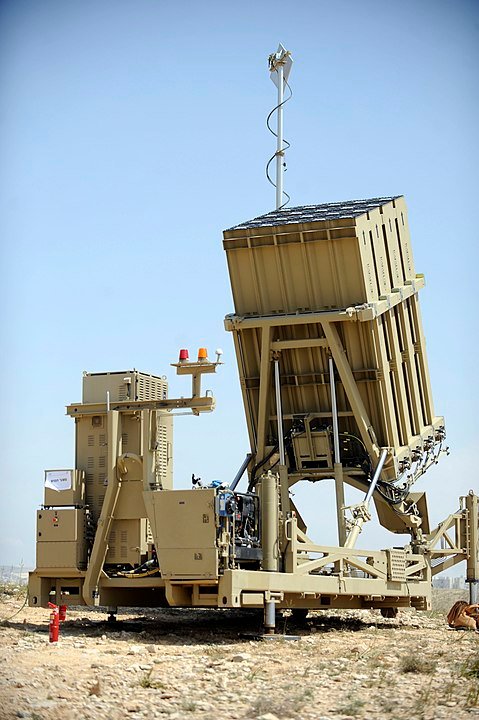
As the years progressed, the system proved its remarkable efficiency, with The Jerusalem Post reporting a staggering 90% interception rate of rockets from Gaza that were aimed at densely populated regions on March 10, 2012. The Israeli government, driven by the system’s success, expressed ambitions to enhance its capabilities, including extending its interception range to an impressive 250 kilometers (155 mi) and enabling it to effectively handle threats from multiple directions simultaneously.
By November 2012, the Iron Dome had already intercepted over 400 rockets, showcasing its significant impact on protecting civilian lives and infrastructure. Its commendable performance continued to elevate, with over 1,200 rockets intercepted by the late October of 2014, underscoring its unwavering commitment to safeguarding the nation against imminent dangers.
Expanding beyond land-based deployment reports in 2017 unveiled plans to deploy Iron Dome batteries on Sa’ar 6-class corvettes at sea. This strategic move aimed to fortify the protection of off-shore gas platforms, effectively integrating with Israel’s advanced Barak 8 missile system to ensure comprehensive security measures even in maritime environments.
III. The Birth of the Iron Dome Air Defence System: A Name Forged in Purpose
Leading the charge in the Development of Weapons and Technological Infrastructure (Maf’at), Colonel S. and his dedicated team embarked on a critical mission to christen their groundbreaking creation. Initially considering ‘Anti-Qassam’ as a suitable appellation, Colonel S. soon recognized the inherent complexities surrounding this choice as the project gained momentum.
Engaging the wisdom of his wife, Colonel S. found inspiration in the name ‘Tamir’ for the missile itself. However, the search for a befitting title for the overarching system led them to the name ‘Golden Dome.’ Yet, the team swiftly recognized the potential for misinterpretation, steering away from any notions of extravagance, and settled on the resolute and unyielding name, ‘Iron Dome.’
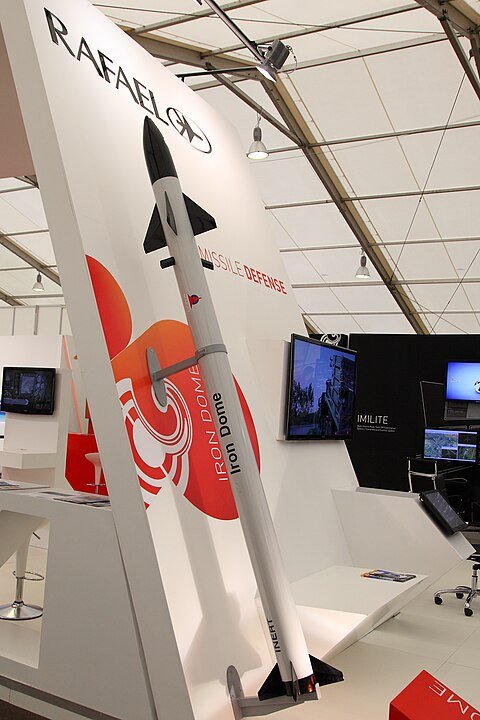
IV. The Ingenious Components of the Iron Dome Air Defence System
Engineered to counter the menace of short-range rockets and 155 mm artillery shells within a radius of up to 70 kilometers (43 mi), the Iron Dome Air Defence System stands as a formidable shield, operating ceaselessly day and night, even in the face of adverse weather conditions. Notably, it possesses the capability to deftly engage multiple threats simultaneously, ensuring comprehensive protection. At its core, the Iron Dome comprises three essential components, each meticulously crafted to fortify its defensive prowess:
- Detection & Tracking Radar: Orchestrated by Elta, an esteemed Israeli defense company and subsidiary of Israel Aerospace Industries, in collaboration with the IDF, this integral radar system, referred to as EL/M-2084, deftly identifies the launch of hostile projectiles and closely monitors their trajectory.
- Battle Management & Weapon Control (BMC): The nerve center of the system, skillfully developed by Rafael in collaboration with mPrest Systems, an Israeli software company, the BMC exercises precise command and control, swiftly analyzing incoming threat data to calculate potential impact points. It then makes calculated decisions regarding the necessity of deploying the system’s defensive mechanisms.
- Missile Firing Unit: The potent Tamir interceptor missile, equipped with cutting-edge electro-optic sensors and engineered with several steering fins for exceptional agility, serves as the frontline defender against incoming threats. Manufactured by Rafael, each Iron Dome battery typically boasts 3–4 launchers, with each launcher accommodating up to 20 life-saving missiles.
Employing a meticulously orchestrated process, the Iron Dome Air Defence System diligently neutralizes potential threats, ensuring that any incoming rockets are intercepted and destroyed before they can wreak havoc on the designated targets.

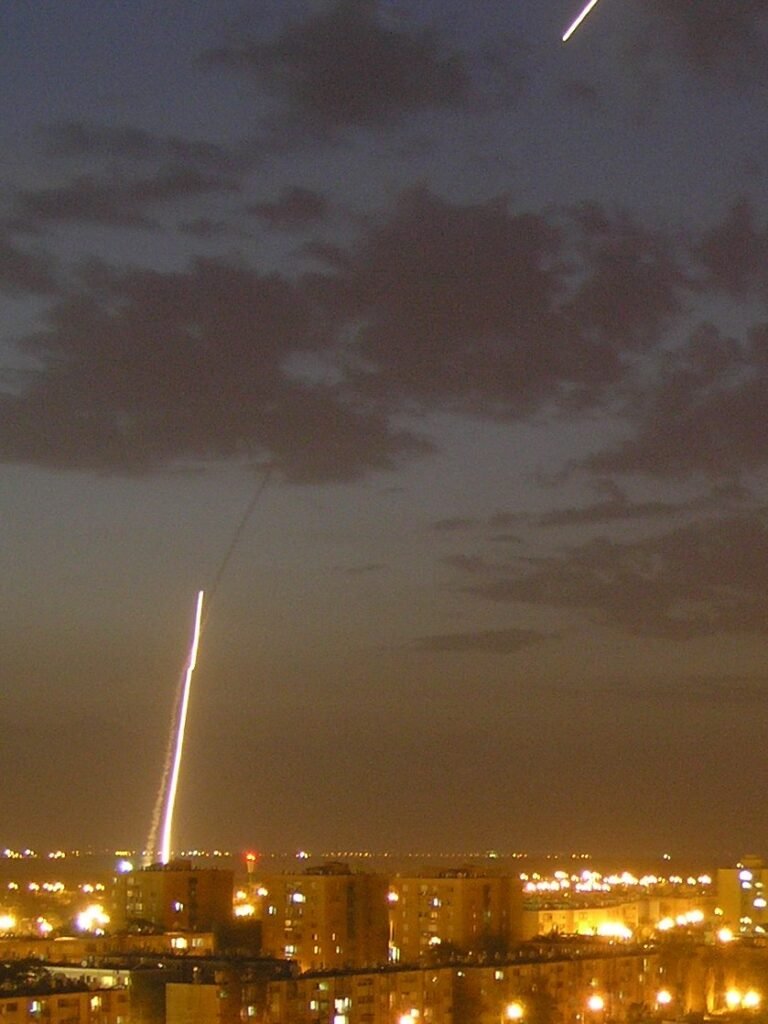
V. Iron Dome Missile: Tamir Interceptor Missile
The Iron Dome missile, known as the Tamir interceptor, stands as the frontline defender within the Iron Dome Air Defence System, delivering exceptional precision and agility in intercepting incoming threats. Equipped with advanced electro-optic sensors and multiple steering fins, the Tamir missile is engineered to swiftly track and neutralize hostile projectiles, ensuring their destruction before they can reach their intended targets.
Crafted with meticulous attention to detail by Rafael, a renowned defense technology company, the Tamir missile represents a pinnacle of cutting-edge engineering, designed to meet the demanding challenges posed by modern warfare. Its rapid response capabilities, coupled with its ability to accurately assess and neutralize multiple threats simultaneously, exemplify the forefront of missile defense technology, serving as a critical safeguard for regions facing persistent security risks.
| Specification | Details |
| Missile Name | Tamir Interceptor |
| Manufacturer | Rafael Advanced Defense Systems |
| Purpose | Intercepting incoming short-range rockets |
| Sensors | Equipped with advanced electro-optic sensors |
| Maneuverability | Several steering fins for high agility |
| Target Range | Capable of intercepting targets within short range |
| Operational Capability | Day and night operations in diverse weather conditions |
| Integration | Integrated within the Iron Dome Air Defence System |
| Deployment Capacity per Battery | Typically 20 missiles per launcher |
VI. Iron Dome vs Patriot Air Defence System
The Iron Dome and the Patriot are both crucial air defense systems, each with unique features and capabilities that make them suitable for different types of threats and operational requirements.
1. Iron Dome:
- Country of Origin: Israel
- Operational Range: Specifically designed to counter short-range rockets and artillery shells with a range of up to 70 kilometers (43 miles).
- Primary Function: Targets smaller, short-range threats typically used by non-state actors or smaller militant groups.
- Interception Method: Relies on the Tamir interceptor missile to intercept and destroy incoming threats.
- Advantages: Highly effective in countering low-altitude, short-range threats with high maneuverability and accuracy. It is also cost-effective and suitable for handling multiple simultaneous threats.

2. Patriot:
- Country of Origin: United States
- Operational Range: Provides defense against tactical ballistic missiles, cruise missiles, and advanced aircraft.
- Primary Function: Protects against a broader range of threats, including longer-range ballistic missiles and advanced aircraft.
- Interception Method: Utilizes various types of missiles, including the Patriot Advanced Capability (PAC) missiles, to intercept and destroy incoming targets.
- Advantages: Offers a wider area of defense against a more diverse range of threats, making it suitable for protecting larger territories and critical assets.
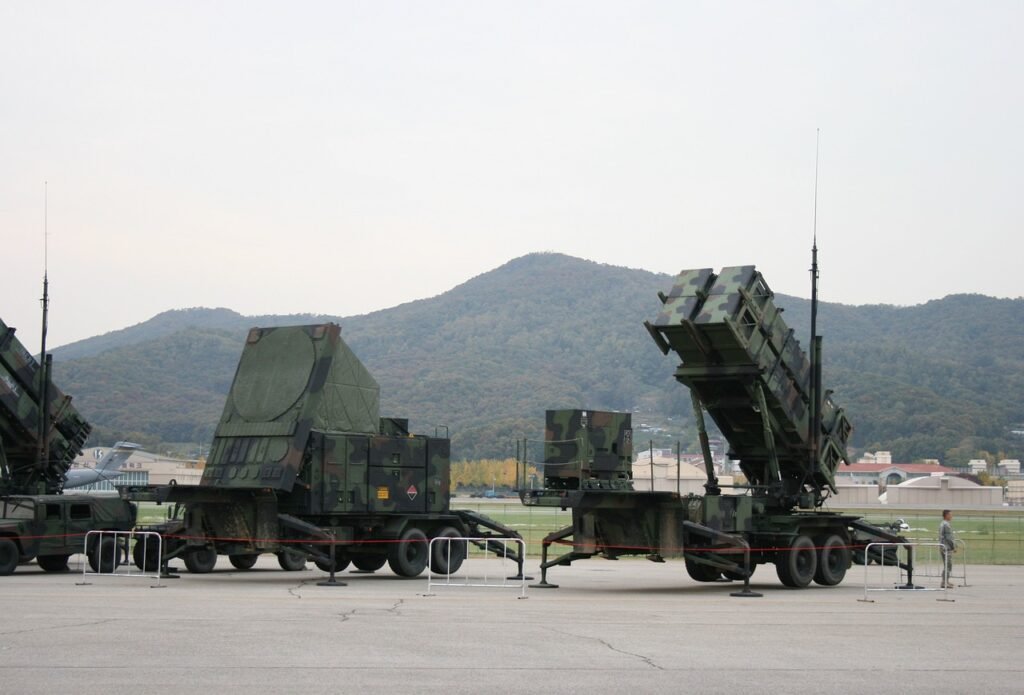
While both systems serve the critical purpose of safeguarding territories from airborne threats, their design and capabilities cater to different operational needs. The Iron Dome is particularly effective against short-range threats, while the Patriot system provides a broader defense umbrella, including protection against more advanced and longer-range threats. The choice between the two depends on the specific security requirements, the nature of the threats faced, and the geographical and strategic considerations of the nation deploying the system.
You know about that Buk Missile System: The Powerhouse of Air Defense.
Israel New Weapon Iron Sting: IDF Unveils New Weapon Use Against Hamas





